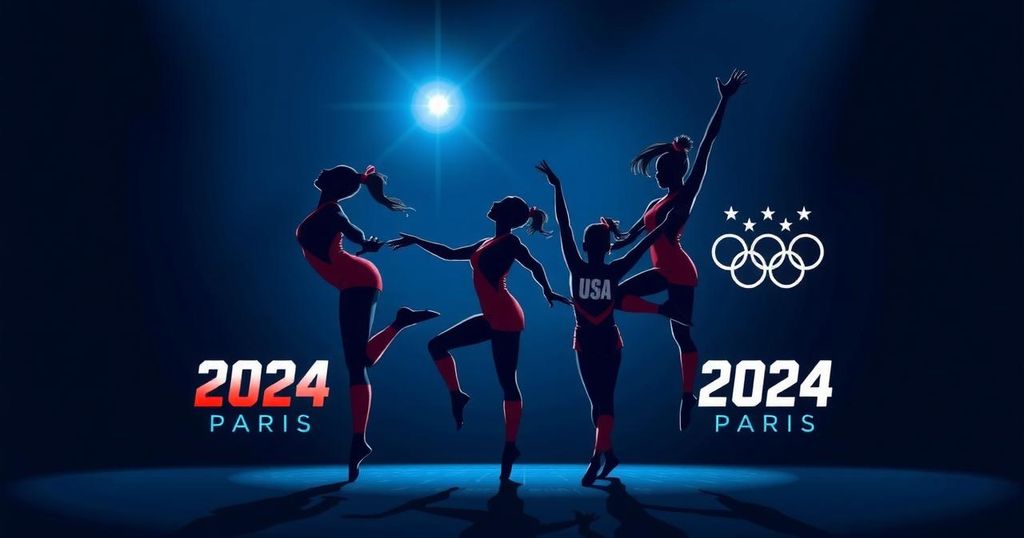Overview of Rhythmic Gymnastics at the 2024 Paris Olympics
Summary
The rhythmic gymnastics event at the 2024 Paris Olympics will include individual and team competitions, where participants will utilize various apparatuses. Team USA gymnast Evita Griskenas is the only American qualifier, while Russia, a previous powerhouse, will not compete due to a ban, creating opportunities for other nations such as Bulgaria, Germany, and Italy to emerge as prominent contenders.
The rhythmic gymnastics competition at the 2024 Paris Olympics will showcase an exciting blend of artistry and athleticism through its unique format. Rhythmic gymnastics was introduced as an individual Olympic sport in 1984 and later incorporated as a team event in 1996. Notably, it holds the distinction of being the only all-female event currently in the Summer Olympics. In the individual competition, participants will execute four routines, each utilizing different apparatus: ribbon, hoop, ball, and clubs. The performance will be evaluated based on difficulty, artistry, and expression, culminating in a cumulative score for an overall ranking. The top 18 gymnasts from the qualification round will progress to the final, where it is anticipated that medal contenders will achieve scores in the range of 130. In the team event, teams composed of five gymnasts from the same nation will perform. The first routine will be conducted with the hoop, while the second will utilize a combination of apparatus—specifically, three ribbons and two balls for the Paris Games. The leading eight teams from the qualifying rounds will advance to the final competition, where it is expected that the top-performing teams will score in the upper 60s. Concerning Team USA, gymnast Evita Griskenas stands out as the sole American athlete to qualify for the Olympics, having advanced to the all-around final at the 2022 World Championships. On the international stage, Russia has historically dominated rhythmic gymnastics, clinching gold medals in both individual and team categories across multiple Olympic Games, from Sydney 2000 through Rio 2016. However, due to the suspension of Russia from the Games as a consequence of its invasion of Ukraine, a notable shift in medal distribution is expected. Other European nations, such as Bulgaria, Germany, and Italy, are anticipated to seize this opportunity and emerge as strong competitors in both events. The 2024 Paris Olympics is poised to be a significant chapter in the history of rhythmic gymnastics, marked by the absence of Russian competitors and the emergence of new contenders poised to challenge for Olympic medals.
Rhythmic gymnastics is a captivating sport that integrates elements of dance and traditional gymnastics, distinguished by its intricate routines performed with various apparatus. Since its Olympic inception as an individual sport in 1984 and the introduction of the team event in 1996, rhythmic gymnastics has captivated audiences worldwide. Its designation as the only all-female event in the Summer Olympics underscores its unique position within the broader gymnastics framework. As the 2024 Paris Olympics approaches, the competition will undergo significant transformations, particularly with Russia’s exclusion from participation due to geopolitical tensions. This alteration in the competitive landscape offers new opportunities for emerging talents from different nations to shine.
In summary, the rhythmic gymnastics segment of the 2024 Paris Olympics is set to feature an enthralling display of talent and artistry. With the historic absence of Russian competitors, the competition landscape will open up for other nations to contest the podium. Team USA’s Evita Griskenas will represent American rhythmic gymnastics, highlighting the potential for new stars to emerge in this dynamic sport. As fans eagerly anticipate the events, the focus will be on both the performances and the reshaped dynamics of international competition in rhythmic gymnastics.
Original Source: www.usatoday.com








Post Comment